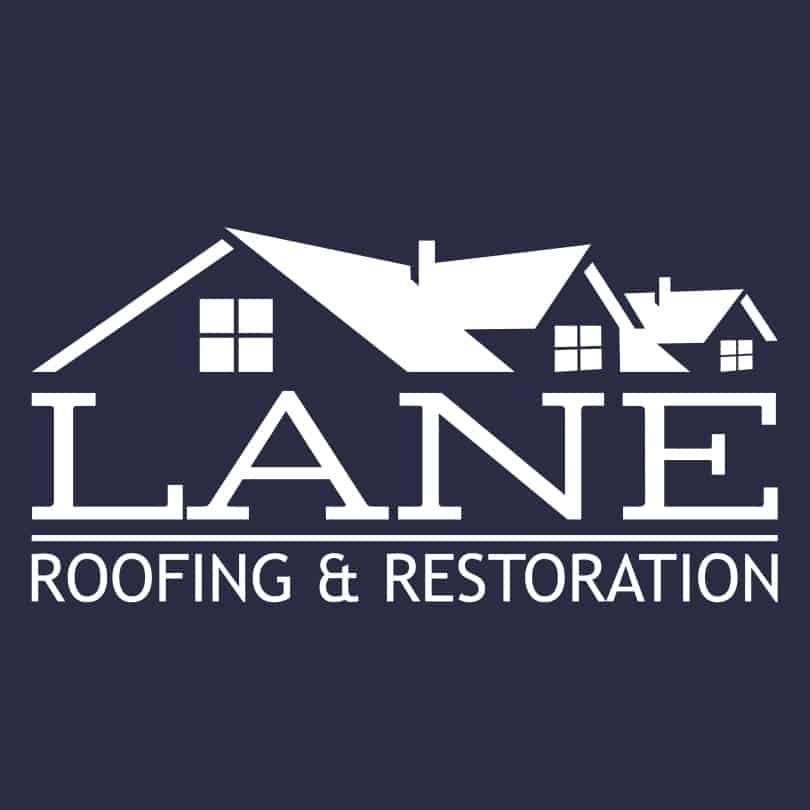When it comes to keeping your Asheville home comfortable and energy bills manageable throughout the year, your roof plays a surprisingly crucial role. Here in Western North Carolina, we experience all four seasons distinctly—from our colorful falls and occasionally snowy winters to our warm, humid summers. This climate variety means your roof needs to work extra hard to maintain your home’s energy efficiency.
At Lane Roofing and Restoration, we’ve helped countless Asheville homeowners transform their energy bills through strategic roofing solutions. Walking through neighborhoods from Montford to West Asheville, I’ve seen how our region’s unique mountain weather patterns impact homes differently depending on their roofing systems. Our customers often tell us they never realized how much their old, inefficient roofs were costing them until they made the switch to energy-optimized roofing. In addition to traditional roofing upgrades, many homeowners have also discovered the energy efficient skylights benefits that enhance both light and insulation in their homes. These skylights not only brighten living spaces but also significantly reduce the need for artificial lighting, further lowering energy consumption. As an added bonus, they can improve ventilation, helping to maintain a comfortable indoor climate year-round.
Understanding Your Roof’s Impact on Energy Bills
Your roof isn’t just a protective cover for your home—it’s an active player in your home’s energy system. During hot summer months, a poorly designed roof can absorb and transfer heat directly into your living spaces, forcing your air conditioning to work overtime. In winter, heat escapes through the same inefficient pathways, driving up heating costs.
The Department of Energy estimates that up to 30% of a home’s heating and cooling energy can be lost through the roof. For Asheville homeowners, this translates to very real dollars being wasted each month on utility bills.
Key Roofing Features That Affect Energy Efficiency
Several aspects of your roof system contribute to its energy performance. Understanding these components helps you make smarter decisions when repairing or replacing your roof.
Roofing Material Choices
The material covering your roof greatly influences its energy properties. Here in Asheville, we recommend several energy-efficient options that perform well in our mountain climate:
Metal roofing has become increasingly popular around Western North Carolina, and for good reason. These systems reflect solar radiation rather than absorbing it, reducing cooling costs during summer. Metal roofs are also excellent at shedding our occasional mountain snowfall, preventing ice dams that can damage your home and decrease efficiency.
“Cool roofs” made from specially coated or naturally reflective materials can reflect up to 65% more sunlight than standard roofing. We’ve installed these systems for many Asheville homeowners looking to maximize energy savings while maintaining aesthetic appeal. In addition to enhancing energy efficiency, cool roof technology benefits contribute to a reduced urban heat island effect, making local environments more comfortable during the warmer months. These roofs not only lower cooling costs but also extend the lifespan of roofing materials by minimizing heat-related wear and tear. As more homeowners embrace these sustainable options, the overall impact on energy consumption and climate resilience continues to grow.
Architectural shingles with ENERGY STAR ratings provide both traditional styling and improved energy performance compared to conventional asphalt shingles. Their thicker construction also holds up better to our occasional extreme weather events.
Insulation and Ventilation: The Hidden Heroes
Even the most energy-efficient roofing materials won’t perform well without proper insulation and ventilation underneath. This is where many Asheville homes fall short.
Proper attic insulation creates a thermal barrier between your living space and the roof. During our home inspections across Asheville, we frequently discover inadequate insulation that fails to meet current energy standards. Simply upgrading to recommended R-values for our mountain climate zone can reduce energy consumption by 15-20%.
Balanced ventilation works hand-in-hand with insulation. It allows heat and moisture to escape in summer while preventing heat loss in winter. Many older Asheville homes lack sufficient ventilation, which not only impacts energy efficiency but can lead to moisture problems and reduced roof lifespan.
Energy Efficiency Across Asheville’s Seasons
Summer Cooling Strategies
Asheville summers bring heat and humidity that can test your home’s cooling system. An energy-efficient roof helps by minimizing heat transfer into your attic space. The difference can be dramatic—interior temperatures in poorly roofed homes can be 10-15 degrees higher than outdoor temperatures on hot days.
Solar reflectance is particularly important during our sunny summer months. Light-colored roofing materials or specialized coatings can reflect up to 80% of solar radiation, keeping your home naturally cooler. We’ve seen homeowners reduce their summer cooling costs by 20-30% after upgrading to reflective roofing systems.
Winter Warming Benefits
While keeping heat out is the priority in summer, keeping it in becomes crucial during Asheville’s chilly winters. A well-insulated roof system prevents warm air from escaping through the top of your home.
Snow retention is another winter consideration in our higher elevation neighborhoods. Energy-efficient roofing systems are designed to maintain even temperatures across the roof surface, preventing the freeze-thaw cycles that lead to ice dams and related energy loss.
The Cost-Benefit Analysis of Energy-Efficient Roofing
Upgrading to an energy-efficient roof does require an upfront investment, but the long-term savings are substantial. For the average Asheville home, energy-efficient roofing can reduce annual heating and cooling costs by hundreds of dollars.
When we help customers calculate their return on investment, we typically find that premium energy-efficient roofing pays for its additional cost within 5-7 years through energy savings alone. Add in potential increases to home value (energy efficiency is increasingly important to Asheville home buyers), and the financial case becomes even stronger.
Local homeowner Sarah from the River Arts District shared her experience: “After installing our new reflective metal roof, our summer electric bills dropped by nearly $70 per month. The investment is paying off faster than we expected.”
Tax Incentives and Rebates for Asheville Homeowners
The financial picture improves further when you factor in available incentives. Energy-efficient roofing often qualifies for federal tax credits that can offset 10-30% of material costs. These credits have been extended and expanded under recent legislation.
Additionally, some insurance companies offer reduced premiums for homes with impact-resistant, energy-efficient roofing, recognizing that these systems typically last longer and resist damage better. This is particularly relevant in Asheville, where we occasionally face severe weather conditions.
Signs Your Roof Is Wasting Energy
How do you know if your current roof is an energy drain? Watch for these telltale signs that we frequently identify during Asheville home inspections:
Significant temperature differences between floors of your home often indicate heat transfer through the roof. If your upstairs rooms are substantially warmer in summer or colder in winter, your roof might be the culprit.
Rapidly melting snow patterns on your roof can reveal heat escape points. Areas where snow melts faster than others suggest uneven insulation or thermal bridging.
Rising energy bills without corresponding rate increases or usage changes might point to decreasing roof efficiency, especially if your roof is more than 15 years old.
Ice dam formation during winter indicates heat escaping through your roof, melting snow that then refreezes at the edges. This is common in many older Asheville homes with inadequate insulation or ventilation.
Energy-Efficiency Upgrades for Existing Roofs
If your roof isn’t due for replacement yet, several upgrades can improve its energy performance:
Radiant barriers installed in the attic can reflect heat away from living spaces. These are particularly effective in our region’s warm months and relatively simple to install under existing roofing.
Roof coatings applied to certain roofing types can increase solar reflectance without full replacement. These specialized white or reflective coatings can reduce roof surface temperatures by up to 50 degrees on hot days.
Improved attic insulation and ventilation can dramatically enhance energy efficiency even with your existing roofing material. This is often the most cost-effective starting point for many Asheville homes.
Making the Right Choice for Your Asheville Home
Every home in Asheville has unique energy needs based on its location, design, and exposure. Homes in northern-facing slopes of town have different considerations than those with full southern exposure in areas like South Asheville or Arden.
When we consult with homeowners, we consider multiple factors: the home’s orientation, tree coverage, architectural style, and the homeowner’s budget and aesthetic preferences. This holistic approach ensures energy improvements that make sense for each specific situation.
For example, historic homes in neighborhoods like Montford may benefit from traditional-looking but highly efficient architectural shingles that maintain period appearance while improving energy performance. Meanwhile, contemporary homes in newer developments might maximize savings with standing seam metal roofing systems.
The Environmental Impact
Energy efficiency isn’t just about saving money—it’s also about reducing environmental impact, something many Asheville residents value deeply. An energy-efficient roof reduces your carbon footprint by decreasing the energy needed to heat and cool your home.
Additionally, many modern roofing materials are partially recyclable or made from recycled content. When we replace roofs, we work with local recycling programs to ensure old materials don’t end up in landfills unnecessarily.
Bringing It All Together
Your roof represents a significant opportunity to improve your home’s energy performance while enhancing comfort and reducing utility costs. In Asheville’s variable climate, these benefits are particularly valuable throughout the year. By investing in energy-efficient roofing materials and designs, homeowners can take advantage of cool roof benefits for Asheville, keeping their living spaces comfortable during the summer months. Additionally, improved insulation and reflective roofing can significantly lower cooling costs, making the home more affordable to maintain. This not only contributes to personal savings but also supports a more sustainable environment by reducing energy consumption.
The best energy solutions are comprehensive ones. When we work with homeowners across Western North Carolina, we look at the entire roofing system—from materials and color to insulation, ventilation, and even gutter systems that protect the building envelope.
With the right approach, your roof can transform from an energy liability into an asset that saves money month after month, year after year. The comfort improvements, reduced environmental impact, and potential increase in home value make energy-efficient roofing one of the smartest investments Asheville homeowners can make.
Ready to learn more about how your roof can help you save energy and money? We’re always available to discuss options specifically suited to your Asheville home and its unique needs. After all, in the mountains of Western North Carolina, local expertise matters.

